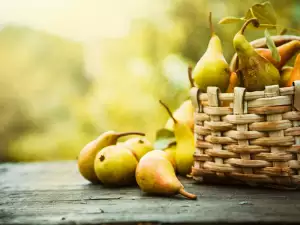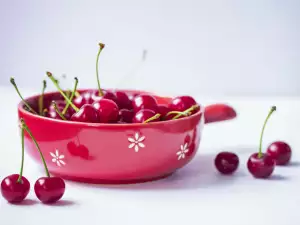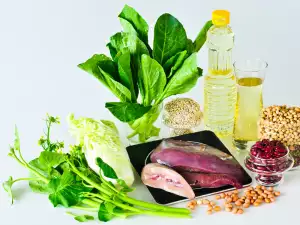Rosehip is called the "Queen of Herbs" because its benefits to human health, tone and food are great. In a cup of rosehip tea or even rosehip jam lies a huge reserve of high content of vitamins, minerals and beneficial acids. Rosehips have a pleasant taste and have been used for centuries in traditional medicine and cookery.
Wild rosehip (Rosa canina L.) is actually a shrub with straight or curved stems. They reach up to three meters tall and are covered with hard and sometimes sickle- like curved spines. Pleasing reddish-orange fruits are single seeded and enclosed in a fleshy skin, which grows and forms bright red spherical fruits. Rosehips bloom from May to July and the fruits ripen in autumn. They usually thrive in different climates and latitudes, and can find their bushes and even 2000 meters altitude. Besides Europe, rosehips are common in Asia, Africa and North America.
Millennia ago, people have used rosehip without even knowing its valuable content. Rosehips are used for the treatment of canine rabies, and later to treat medical conditions known today as avitaminosis. In Russia, rosehip tea even healed ulcers, gastritis, colitis and liver disorders.
In China, rosehips have been used as a means of improving digestion and against the emergence of worms, in Tibet it was a remedy for atherosclerosis, kidney disease and neurasthenia. In folk medicine, Rosehips are appreciated for their high vitamin content and their ability to strengthen the immune system.

Composition of rosehips
Rosehips are literally nutrient bombs. They have a high content of vitamin C, resulting in improved fruits with redox processes in cells and capillary permeability. An additional plus is their diuretic effect. It has been shown that 100 g of rosehip fruit contains about 2 grams of vitamin C - 30 to 40 times more than red tomatoes and lemons and about 300 times than apples.
The fruits of hips contain a valuable set of natural vitamin A (5-7 mg%) and essential fatty acids (Omega-3 and Omega-6), combined with powerful antioxidants, flavonoids and vitamin E, which are all important for the strength and beauty of your skin.
In rosehipa, you will discover vitamins D, B1 (about 430 mg%), B2, C and pectin (about 11%), oil (about 2%), organic acids (citric and malic), sugars (mostly sucrose, 2.5 %), tannins and mineral salts (about 3.25%), mainly potassium (about 512 mg%), calcium (50 mg%), phosphorus (about 54 mg%), sodium (about 47 mg%) and magnesium (about 122 mg%) salts. The mineral content of rosehip outperforms many fruits and vegetables.
Selecting and storing rosehip
Whenever you have the opportunity to pick rosehip berries straight from the tree, take advantage. The highest content of vitamin C is in the beginning of the full maturity of the fruit - they are bright red and hard. In wobbly rosehip, this content is lesser. It is best that rosehips are harvested in September and cyou an not wait for their full maturation. Red color indicates that the hips are ready for picking.
Fresh fruits surpass all other forms - dried rosehip, rosehip tea, rosehip flour. But in the winter, dried rosehips are good sources of vitamin C. Because of the stability of vitamin C, an enviable amount of it can be found even in winter marmalades.
Keep rosehip in a cloth bag. To save the properties of rosehip for long, you can dry them yourself at home - on open or in the oven. The fruit should be dried and stored properly.
If a droughty outdoor area, spread the fruit in a dry and airy, but sheltered place. From the right pereparation, you will retain all the vitamin C. From time, to time, turn and allow them to dry 10 to 12 days. Rosehips are oven dried at 110 degrees for 10 min, then drop the heat to 70 degrees. 1 ĸg shipĸi rosehip makes about 500 g dried fruit.

Rosehip in cooking
With rosehip, very delicious jams, jellies and marmalades can be prepared, as can useful and refreshing teas, and wines. On the shelves you can find even Rosehip meal, which is an excellent dietary product. Rosehip syrup is particularly suitable for babies and small children, which is given as a dietary supplement. If in the morning you snack on wholemeal bread with a little butter and rosehip jam, you can be sure that you start your day well.
You can prepare a refreshing drink from rosehip, not boiled, though. Just pour a certain amount of fruits in a mix of water and sugar to taste and leave it to stand for 5-6 days. Then strain and drink. Preparing rosehip jam is also quite easy. Clean and wash the fruits, halve them and rinse again. Fill water to 1 cm above the rosehips and put them to boil.
Well relented rosehip is blended or rubbed through a fine sieve and strained through cheesecloth to remove the seeds and skins that are not good for consumption. 1 kg of the resulting paste is placed 500 g of sugar and 1 cup optional apple sauce. Cook the puree with sugar until thickened and stir continuously. The finished jam is poured in warm jars, closed and sterilized for 10 minutes. To prepare tea from rosehip, make the infusion of 1 tablespoon dried rosehip in 250 ml boiling water. For better taste, sweeten your tea, not only because it's delicious, but because sugar stops the oxidation.
Benefits of rosehip
The powerful antioxidants in the rosehip helps to maintain the natural beauty of your skin - makes it plump, supple and makes it look youthful because the fruits have powerful tools that eliminate the symptoms of aging - wrinkles, spots and even stretch marks. Rosehips are used for preventive treatment and speedy recovery of the skin (dermis, epidermis, collagen and elastin), strengthen blood vessels and bring the cell membranes of all cells to their full operation. Rich in pectin and tannins, rosehip helps with gastrointestinal and bronchial diseases, forming a protective layer on both membranes.

The efficacy of rosehip the treatment of flu, coughs, nasal and uterine bleeding are just a few of its hidden talents in support of human health. Eat regular rosehip products to activate enzyme systems and processes for the synthesis of hormones, which have astringent action and benefited carbohydrate metabolism and vascular permeability. Rosehip is used for burns and more recently in the treatment of burn wounds (the leaves). Rosehip Extract helps joint pain.
Vitamin C in combination with other valuable ingredients increase the vitality and efficiency of the body. They are a powerful tool in the treatment of vitamin deficiency (scurvy) and hypovitaminosis (spring fatigue, conditioning after serious illness). If you have any problems with the immune and circulatory systems, the rosehips are your helpers. They can improve the performance of brain and thyroid.
There is evidence that rosehip therapy helps hip grit and stones in the urinary tract, and in the fight against local or general infections (scarlet fever, diphtheria, whooping cough and pneumonia). Besides all this, the small red fruits are the first friend of our liver, they lower blood sugar levels, making the hips very suitable for consumption by diabetics.
Dangers of rosehip
Rosehips can have a constipating effect. It is good before use to wash the fruits and clean them of tips, seeds and hairs. Otherwise, you may incur disorder.




















Comments